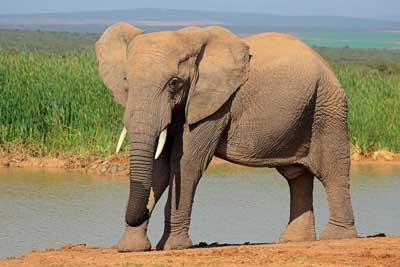- Advertising
- Bare Metal
- Bare Metal Cloud
- Benchmarks
- Big Data Benchmarks
- Big Data Experts Interviews
- Big Data Technologies
- Big Data Use Cases
- Big Data Week
- Cloud
- Data Lake as a Service
- Databases
- Dedicated Servers
- Disaster Recovery
- Features
- Fun
- GoTech World
- Hadoop
- Healthcare
- Industry Standards
- Insurance
- Linux
- News
- NoSQL
- Online Retail
- People of Bigstep
- Performance for Big Data Apps
- Press
- Press Corner
- Security
- Tech Trends
- Tutorial
- What is Big Data
Big Data Goes Wild! How Big Data is Making a Big Difference to Wildlife
Big data can help business in many ways: improving everything from marketing to production to research and development. It's also proven invaluable to political campaigns and is revolutionizing healthcare. But what about the animals? As it happens, big data is helping them, too, as well as the environment that both humans and animals depend on for survival. Here's how.

Big data can help business in many ways: improving everything from marketing to production to research and development. It’s also proven invaluable to political campaigns and is revolutionizing healthcare. But what about the animals? As it happens, big data is helping them, too, as well as the environment that both humans and animals depend on for survival. Here’s how.
Big Data Assists With Forest Management

The biodiversity of the world’s forests, parks, and animal sanctuaries directly affects the health of humans. Declining populations of animals can affect how clean our air and water is and even how much food we have to eat. Forest management is now changing radically as data analysts have discovered ways to use big data from park and forest management cameras to track and monitor the population of different species of animals all over the world. They can then use analytics to turn the camera data into useful insight.
For example, a decline in the population of big cats could be the result of too many people in the area. With this information, park managers can change what trails park visitors use, thereby stabilizing the cat population in that ecosystem.
Big Data Helps Track Poaching Activities

Poaching is another way that animal welfare affects humans in ways that people don’t always understand. Poaching is now the fifth most profitable illegal trade worldwide, and does far more than affect the population of the poached animals. Poaching can literally rock the stability of governments and is one of the prime means for funding terrorist activities around the world. In fact, the terror group al-Shabab reportedly gets as much as 40% of their funding from poaching animals.
Big data is now useful in tracking poaching activities around the globe and even predicating where poaching is next likely to occur. It works like this: researchers accumulate news reports from all over the world and scan the content for articles related to illegal activity involving wildlife. This data is then used to determine where poaching is taking place. Using predictive analysis, researchers can then determine where it is likely to occur in the future. Though it is impossible to pinpoint poaching activities to such an accurate degree that officials on the ground could intercept poachers, it does narrow the possibilities to the extent that drones can be sent to monitor the area and deter any criminal activity there.
Big Data Can Monitor Small Animal Populations to Predict Human Pandemics
Most people are aware that small animals like rodents are commonly the cause of disease outbreaks among people. For instance, the Bubonic plague that killed as much as 60% of the population in Europe is thought to have been spread by the fleas that lived on rats. Even when the animals aren’t the cause of epidemics and pandemics, the disease often occurs in the animals before affecting people, so monitoring the health and pathology of small animals is an excellent way to predict, and in many cases prevent, outbreaks among people. Some researchers are doing just that. They monitor small animal populations in the developing world, collect data on their virology, and release the data so that healthcare professionals can be aware of the possibilities and take measures to stop or prevent an outbreak among people. In areas of the world where medical treatment is hard to come by, this can mean the difference in thousands or millions of human lives saved.
Not only is big data helping animals live safer, healthier lives, it is also creating a healthier, safer world for all life to share. You don’t have to be saving the lions and tigers and bears to make great use of good data! Get started with your own big data endeavors at BigStep today!
Readers also enjoyed:

2 Insanely Clever Tips & Tricks for Running Spark on Hadoop

Leave a Reply
Your email address will not be published.